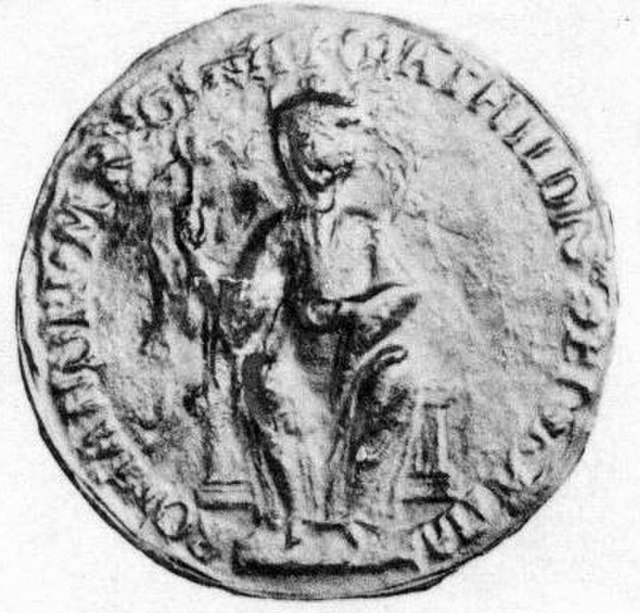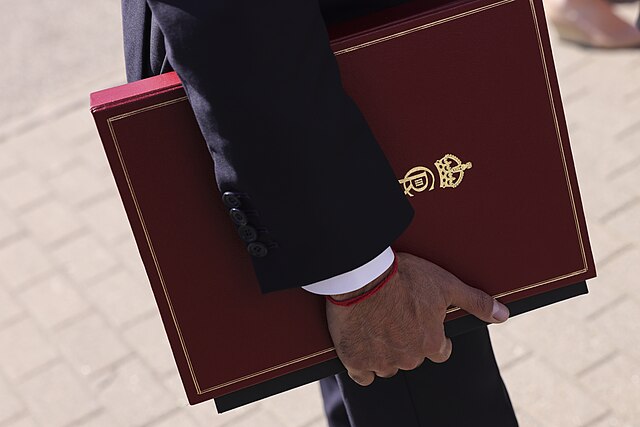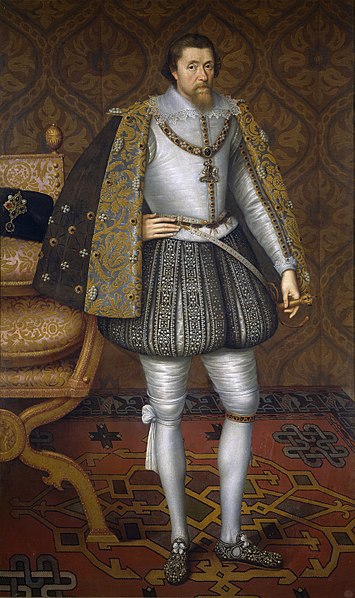Henry II, also known as Henry Fitzempress and Henry Curtmantle, was King of England from 1154 until his death in 1189. During his reign he controlled England, substantial parts of Wales and Ireland, and much of France, an area that altogether was later called the Angevin Empire, and also held power over Scotland and the Duchy of Brittany.
Contemporary depiction of Henry from the Gospels of Henry the Lion, c. 1175–1188
The great seal of Empress Matilda
The capture of Montsoreau Castle, next to the River Loire, in 1152 marked the end of the revolt organised by Geoffrey against his brother.
12th-century depiction of Henry and Eleanor of Aquitaine holding court
Monarchy of the United Kingdom
The monarchy of the United Kingdom, commonly referred to as the British monarchy, is the form of government used by the United Kingdom by which a hereditary monarch reigns as the head of state, with their powers regulated by the British Constitution. The term may also refer to the role of the royal family within the UK's broader political structure. The current monarch is King Charles III, who ascended the throne on 8 September 2022, upon the death of his mother, Queen Elizabeth II.
Monarchy of the United Kingdom
Ministerial folder with the monarch's emblem
The English Bill of Rights of 1689 curtailed the sovereign's governmental power.
In 1603 James VI and I became the first monarch to rule over England, Scotland, and Ireland together.








